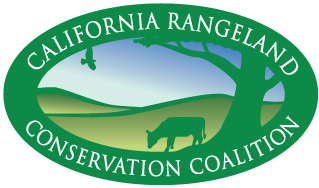“Originally published in the National Cattlemen’s Beef Association’s Directions magazine.”
In the last 50 years, the volume of beef produced in the U.S. has grown by 25% while the number of cattle has decreased by 6%. With increased efficiency in mind, technology is what makes the U.S. the global leader in high-quality, sustainable beef.
Out West, the Austel family also adopts technologies to solve problems and set them up for a successful future. John Austel, owner of 4J Horse and Livestock Co. and a first-generation rancher, has grazed cattle in Southern California with his family for 10 years, working hand in hand with the local Natural Resources Conservation Service (NRCS) and California Department of Fish and Wildlife (CDFW) to return fallow acres to grazing land for cattle production. They run a Natural Angus operation on an Old Spanish Land Grant which used to be agricultural land but sat unused for more than 20 years. It is now a CDFW Ecological Reserve and Wildlife Area.
Along with raising cattle, the ranch focuses on preserving land, water and ecosystems unique to their region. To manage these different factors and stay in business, the Austels had to look for technologies and practices that would also reduce labor and cost while contributing to conservation. “Striving for win-win solutions has always been our mindset and has served us well so far. We are currently working with entities onsite to help increase our knowledge of range monitoring, wildlife habitat improvement and maintenance, soil health, wildfire fuel management and more,” Austel explained.
One of the first things they decided to tackle was water. After two major wildfires burned the land in 2003 and 2007, water infrastructure was one of the first things needing replacement. John and his eldest son, Jake, saw an opportunity to do something different. With support from the NRCS Environmental Quality Incentives Program (EQIP) they converted previously drilled wells from electric to solar. NRCS conducted site inspections and engineered designs, and the Austels installed the solar-powered technology using EQIP funding.

The solar-powered wells transform sunlight to energy to pump water into holding tanks. As cattle drink from nearby troughs or the water evaporates, the float in the trough signals to the holding tank it needs to be refilled. The holding tank’s elevation is above that of the trough, so gravity is optimized to refill the trough. Each well location is required by NRCS to have two 5,000 gallon holding tanks to store water for up to three days in case of an emergency. In addition, each tank has a quick connection for the fire department to be able to get a one-time shot of 10,000 gallons of water if needed. 4J Horse and Livestock has seven solar water pumps on the ranch, with plans to establish an eighth. “The largest benefit is there’s no power bill. That’s the first benefit — a financial benefit. The second benefit is they are very low maintenance. Those two things make me feel they are very reliable, and they are beneficial to invest in,” John said.
Saving money is always important to a business, and not repairing wells often saves labor and allows John and Jake to focus their attention on other things, like herd genetics and other infrastructure maintenance. Looking ahead, John is excited to see solar water technology advance. “These pumps we are putting in, we will be able to add more solar panels to a low-flow well to increase the gallons per minute. With these pumps, they can increase from 10 to 12 gallons a minute up to 25 gallons a minute if you add more panels,” John explained. “You increase your flow just by increasing the number of panels and without replacing the pump.”
There are other emerging technologies John is keeping an eye on to improve his water management and adaptive grazing plans. He is excited to watch tools progress and determine if they will fit into 4J Horse and Livestock’s plans.
